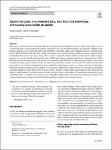Thông tin tài liệu
Thông tin siêu dữ liệu biểu ghi
| Trường DC | Giá trị | Ngôn ngữ |
|---|---|---|
| dc.contributor.author | Lesser, Chris N. | - |
| dc.contributor.author | Brandes, Arno F. N. | - |
| dc.date.accessioned | 2023-08-04T03:07:47Z | - |
| dc.date.available | 2023-08-04T03:07:47Z | - |
| dc.date.issued | 2023 | - |
| dc.identifier.uri | https://link.springer.com/article/10.1007/s13412-023-00828-7 | - |
| dc.identifier.uri | https://dlib.phenikaa-uni.edu.vn/handle/PNK/8661 | - |
| dc.description | CC-BY | vi |
| dc.description.abstract | This article considers how the construction practices of marginalized communities in Rio de Janeiro link the provision of essential housing to distant forest environments and markets for wood building materials. As elsewhere in Brazil, many families without access to real estate markets have built their own homes using locally available materials, a right protected by the 1988 Constitution and federal law. Today, these houses are typically built from reinforced concrete and clay bricks and finished with a roof of clay tile or cheaper fiber-cement corrugate. Production and sale of fiber-cement, which contains asbestos, were restricted by Rio de Janeiro State law in 2001 and ruled unconstitutional by Brazil’s Supreme Court in 2017. But little attention has been given to the human and environmental health effects of other building materials. | vi |
| dc.language.iso | en | vi |
| dc.publisher | Springer | vi |
| dc.subject | Rio de Janeiro link | vi |
| dc.subject | local botanical knowledge | vi |
| dc.title | Against the grain: environmental laws, local botanical knowledge, and housing access in Rio de Janeiro | vi |
| dc.type | Book | vi |
| Bộ sưu tập | ||
| OER - Khoa học môi trường | ||
Danh sách tệp tin đính kèm:

